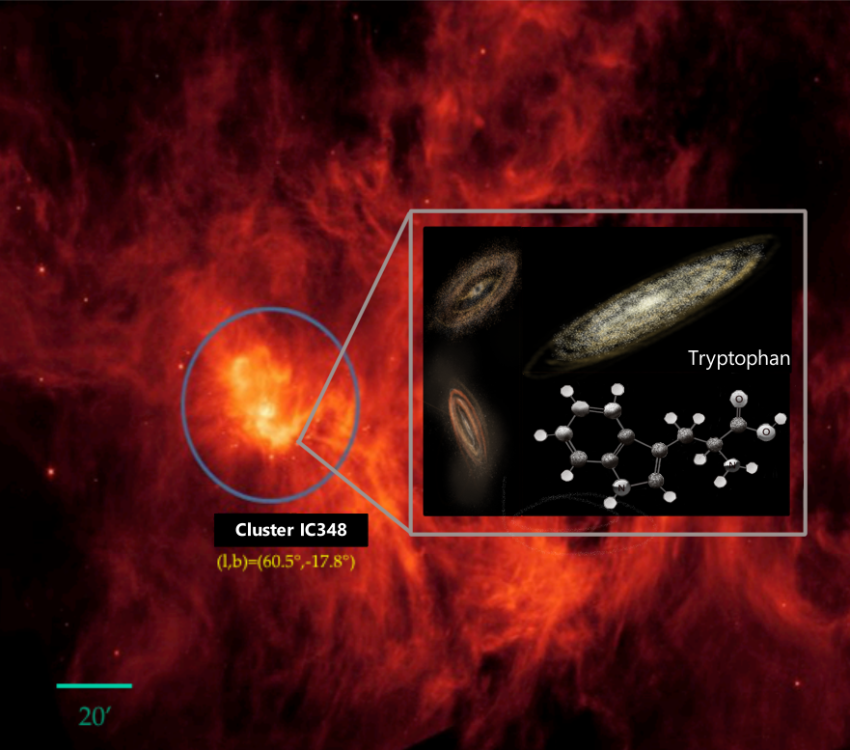Proof for the existence of the amino acid tryptophan present in the interstellar material in a nearby star-forming region has been discovered by Dr. Susana Iglesias-Groth, a scientist from The Instituto de Astrofísica de Canarias (IAC). This was done by making use of the data from the Spitzer space observatory.

Image Credit: Jorge Rebolo-Iglesias. Background image: NASA/Spitzer Space Telescope
The study has been reported in the Monthly Notices of the Royal Astronomical Society.
In the Perseus Molecular Complex, high amounts of tryptophan were detected, particularly in the IC348 star system, a star-forming region that is around 1000 light years away from Earth - comparatively close in astronomical terms. Generally, the region is invisible to the naked eye but shines brightly on being viewed in infrared wavelengths.
Tryptophan is one of the 20 amino acids essential for the formation of main proteins in life on Earth and further produces one of the richest patterns of spectral lines present in the infrared. Hence, it was a clear candidate to be explored with the help of the broad spectroscopic database of the Spitzer satellite, a space-based infrared telescope.
The study of the infrared light emitted from the region disclosed 20 emission lines of the molecule tryptophan. The temperature of the tryptophan is nearly 280 K or 7 °C. Previously, Iglesias-Groth found hydrogen and water at the same temperatures in IC348.
The study also implies that the emission lines linked to tryptophan may be present in other star-forming regions and that their existence is common in the gas and dust from which stars and planets are developed.
Generally, amino acids are found in meteorites and were present during the formation of the Solar System. This new work could show that such protein-building agents—that are vital to the development of life—exist naturally in the regions where stars and planetary systems develop and might contribute to the early chemistry of planetary systems around other stars.
The evidence for tryptophan in the Perseus molecular complex should encourage additional effort to identify other amino acids in this region, and in other star-forming regions. It is a very exciting possibility that the building blocks of proteins are widely present in the gas from which stars and planets form-it may be key for the development of life in exoplanetary systems.
Dr. Susana Iglesias-Groth, Instituto de Astrofísica de Canarias
Journal Reference
Groth-I, S., et al. (2023) A search for tryptophan in the gas of the IC 348 star cluster of the Perseus molecular cloud Get access Arrow. Monthly Notices of the Royal Astronomical Society. doi.org/10.1093/mnras/stad1535.